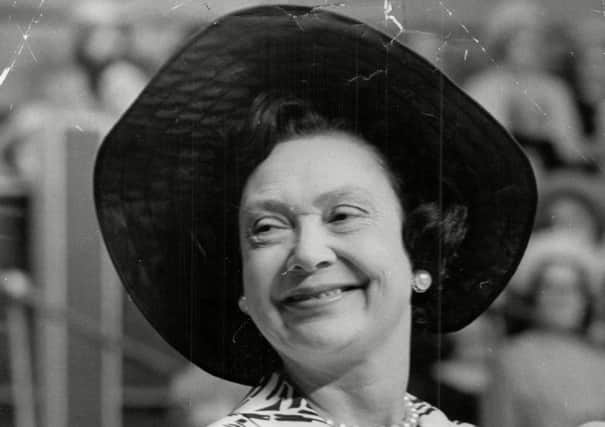Obituary: Mary, Duchess of Roxburghe,


MARY, Duchess of Roxburghe, was the daughter of a Marquess who after her marriage to the Duke of Roxburghe refused, on their pending divorce, to vacate the historic family seat at Floors Castle, Kelso – despite her husband making strenuous efforts to evict her. For six weeks in 1953 Mary refused to leave her quarters – and survived without phone, water, electricity and limited access to any friends. She simply refused to comply with her husband’s rigorous demands.
The infuriated Duke instigated an action under Scottish common law which then laid down that a wife lived in her husband’s house only “by license”.
Advertisement
Hide AdAdvertisement
Hide AdBut the Duke showed no solid legal explanation or gave any justifiable reason for wanting to remove his wife from the impressive ancestral home overlooking the Tweed.
The unfortunate affair attracted much attention throughout the Borders and the rest of Scotland. Mary withstood the siege and the difficult domestic situation was somewhat alleviated when their near neighbour, Lord Home of the Hirsel (later to renounce his title and become the prime minister, Sir Alec Douglas-Home) advised Mary to inform the insurance company of the risk of fire. It is said locally that other neighbours such as Lord Haig found ways to surreptitiously ferry in essentials by the back door.
The long-running drama was eventually settled out of court and Mary began a new life in a flat overlooking London’s Hyde Park and an inherited country house in the Surrey village of West Horsley. In December 1953 Mary was granted a divorce on account of her husband’s adultery. It is thought she never returned to Floors Castle.
Mary Evelyn Hungerford Crewe-Milnes was the daughter of Robert Crewe-Milnes, 1st Marquess of Crewe and was named after her godmother, Queen Mary. Her father had followed a successful diplomatic career holding such influential posts as Viceroy of Ireland, Secretary of State for India and ambassador to France.
Mary was the first wife of George Victor Robert John Innes-Ker, 9th Duke of Roxburghe, known to family and friends as “Bobo”, whom she married in a grand society wedding in 1935 in Westminster Abbey.
Mary Crewe-Milnes was brought up in some grandeur at Crewe Hall, an imposing Jacobean mansion in Cheshire and at Crewe House in London’s Mayfair. Mary’s parents entertained King George and Queen Mary to dinner during Derby week and their neighbours were Lord and Lady Curzon. For the past few years it has housed the Royal College of Pathology.
The 9th Duke of Roxburghe was recognised as an excellent shot on the grouse moors. In pre-war London Mary was a central figure both at Court and in London society: at the coronation of King George VI and Queen Elizabeth in 1937 Mary held the new Queen’s canopy during the ceremony at Westminster Abbey. During the war she was active in various causes and showed particular resilience in the early months of conflict by joining a party of “illicit wives” who somehow were granted passages to the Middle East to be with their Army husbands.
After the traumas of her divorce Mary led a quiet life in London but was active in her support of various charities acting as president of the National Union of Townswomen’s Guilds and an enthusiastic member of the Royal Society of Literature.
Advertisement
Hide AdAdvertisement
Hide AdShe also was a passionate bridge player and a strong supporter of the Royal Ballet during its golden years under the artistic directorships of, first Dame Ninette de Valois, and then Sir Frederick Ashton. Mary was regularly seen at performances given by Margot Fonteyn and Rudolf Nureyev.
From her mother she inherited, in 1967, West Horsley Place, a spacious 16th-century house in Surrey. Mary enjoyed the house’s fine pastoral setting and developed the farm with a shrewd efficiency.
Mary took a sanguine attitude to the grand material style in which she had been brought up.
When informed in 1983 that Crewe House, sold by her father in 1937 for £90,000, was on the market again for £50 million, she simply commented: “I will bear the news with fortitude.” What she would have thought if she had been told that in the past week the mansion has gone on the market with a guide price of £75m one can only speculate. There were no children from her marriage.
ALASDAIR STEVEN